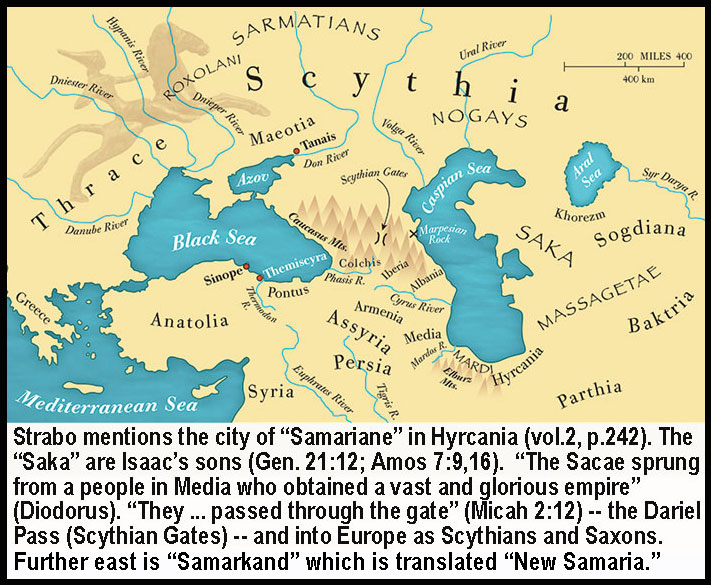
Who Are The People Who Sat in DARKNESS?
"People which sat in DARKNESS" (Matt. 4:16; Lk 1:79) or in Greek, "People who sat in SKOTOS" or SCYTHIA "saw great light." Greek "SCOTOS" means "DARKNESS." Did Jesus visit SCYTHIA? The Greek "KIMEROS" means a "mist or DARKNESS" and the Latin CIMMERIUS is applied to anything DARK or BLACK. The Odyssey 11:14 describes Cimmerians as "immersed in darkness and unblessed by the rays of Helios." Did Jesus visit the CRIMEA? When Isaiah 9:2 mentions "people who walked in DARKNESS," it may be refering to the spiritual state and physical LOCATION of the scattered Israelites. Is this how the BLACK Sea got its name? The Hebrew word CHEMARIM occurs in 2 Kings 23:5, Hosea 10:5 and Zephaniah 1:4 and is applied to the idolatrous priests of the House of Israel because they wore BLACK robes instead of being clothed in "white linen." The notorious king of Israel called OMRI created the idolatrous system among the ten tribes. Yes "Ephraim is a cake not turned" (Hos. 7:8) -- therefore BURNT or BLACKENED (KYMRY). Even the biblical phrase "outer DARKNESS" may refer to "outer SCYTHIA" or PHRYGIA or PELOPPONESIA, all places where Israel dwelt that also mean BLACK. Dan's son HUSHIM, who lived in Greece, means BLACK also. They left the light of Israel and loved DARKNESS. God said he would hedge up their way with thorns so they wouldn't find their paths back. That is, constantly driven Westward by an East wind into the British Isles.